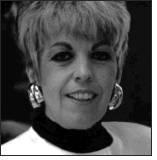Drippin’ Life
At dinner the other night, I asked my four grandchildren if they knew who Audie Murphy was? None had heard of him. Neither had their parents, both born in the mid-1970s. Made me feel about the same when I asked my class of college seniors where they were when President Kennedy was assassinated? A majority of them either weren’t born in 1963 or had been too young to know about what was going on.
So, even though Memorial Day has just passed, remember – if you can – the 1950s and this highly decorated hero of World War II…and, if you get the chance, share his story with a youngster.
Born Audie Leon Murphy on June 20, 1924, near Kingston in Hunt County, living on a hardscrabble farm in a dilapidated sharecropper’s shack. There was no electricity or indoor plumbing. His father, Emit Murphy, was an illiterate, ne’er-do-well and a poor provider but continued to father children with his wife Josie, 12 in all, despite that fact that he had no plan for how to feed them. Audie was the seventh in the line.
Taking up the slack, young Audie helped feed his mother and siblings by hunting rabbits and other small animals around their property. A school was nearby, so Audie went when he could, but he was about two years older than most of his classmates. During picking season, he left schoolwork behind to pick cotton, a backbreaking, low-pay task, but his family needed the money he earned and he grew stronger, working in the cotton fields.
In 1939, Emit Murphy deserted the family and disappeared. Worn out from overwork, worry and a broken heart, Josie Murphy died a year later.
Sixteen-year-old Murphy knew he had to do something to keep his family afloat, so he dropped out of school and found a job, repairing radios, making $16/week.
When war broke out, the short, skinny youngster tried to enlist in the Marines and the paratroopers, but was rejected for being underweight…and underage. Finally, the Army accepted him, 10 days prior to his 18th birthday at the recruiting station in Greenville. From there, he boarded a bus for a ride to Mineral Wells --Fort Wolters -- in June 1942, for basic training and then to Fort Meade, Maryland, for advanced training and extensive weaponry testing. He excelled in marksmanship and in bayonet training even though the teen from Texas wasn’t much taller than his weapon.
In February 1943, he shipped out for North Africa as a private in Company B, Fifteenth Infantry Regiment, Third Infantry Division. He earned a field promotion in Africa and later served as the commander of Company B.
He first saw action in the 1943 Allied invasion of Sicily; then in 1944 he participated in the Battle of Anzio, the liberation of Rome, and the invasion of southern France. Murphy fought at Montélimar, and led his men on a successful assault at the L’Omet quarry near Cleurie in northeastern France in October.
In August 1944, Murphy’s division moved to southern France, near Holtzwhir, as part of Operation Dragoon. It was there his best friend, Lattie Tipton, was lured into the open and killed by a German soldier pretending to surrender.
Enraged by this act, Murphy charged and killed the Germans that had just killed his friend. He then commandeered the German’s tank, machine gun and grenades and attacked several more nearby positions, killing all of the German soldiers there. For this, Murphy was awarded the Distinguished Service Cross for his valor, 33 US Military Medals, 3 Purple Hearts, and the Congressional Medal of Honor.
After the war, Murphy also received several French and Belgian decorations for valor. He fought in eight campaigns in Sicily, Italy, France, and Germany; and participated in two amphibious assaults, in Sicily and southern France. He was wounded three times. He was discharged from the United States Army at Fort Sam Houston, San Antonio, on August 17, 1945.
In June 1945, Murphy returned home from Europe a hero and was greeted with parades and elaborate banquets. LIFE magazine honored the brave, baby-faced soldier by putting him on the cover of its July 16, 1945 issue. That photograph inspired actor James Cagney to call Murphy and invite him to Hollywood to begin an acting career.
He wrote his autobiography in 1949 – To Hell and Back – which became a best seller as well as a movie in which he starred. In all he made about 40 movies, enjoyed success as a songwriter and yet, in spite of his fame, he battled his entire life with what has now been identified as Post Traumatic Stress Disorder.
In 1950 Murphy joined the Thirty-sixth Division of the Texas National Guard as a captain, hoping to fight in the Korean War. The division, however, was not called to active duty. Murphy remained with the Thirty-sixth “T-patchers” for several more years, eventually attaining the rank of major. In 1957 he was assigned to inactive status. He transferred to the United States Army Reserve in 1966, where he remained until his death.
Murphy married movie actress Wanda Hendrix in 1949, their marriage ending in divorce two years later. In 1951 he married Pamela Archer, a stewardess for Braniff Airlines and from this union, two sons were born.
Murphy died in a private plane crash on May 18, 1971, near Roanoke, Virginia, caused by heavy fog and inclement weather…and, after funeral services in Los Angeles and Farmersville, Texas, was buried at Arlington National Cemetery on June 7, 1971, with full military honors.
It’s important for young and future generations to know about our homegrown heroes like Audi Murphy, and to personally know veterans who have served our country. Take the time to visit a national or state cemetery, remember to respect the flag, and pause to spend a moment in silent thanks for our nation’s many heroes, and the sacrifices they have made for all of us to be free.


